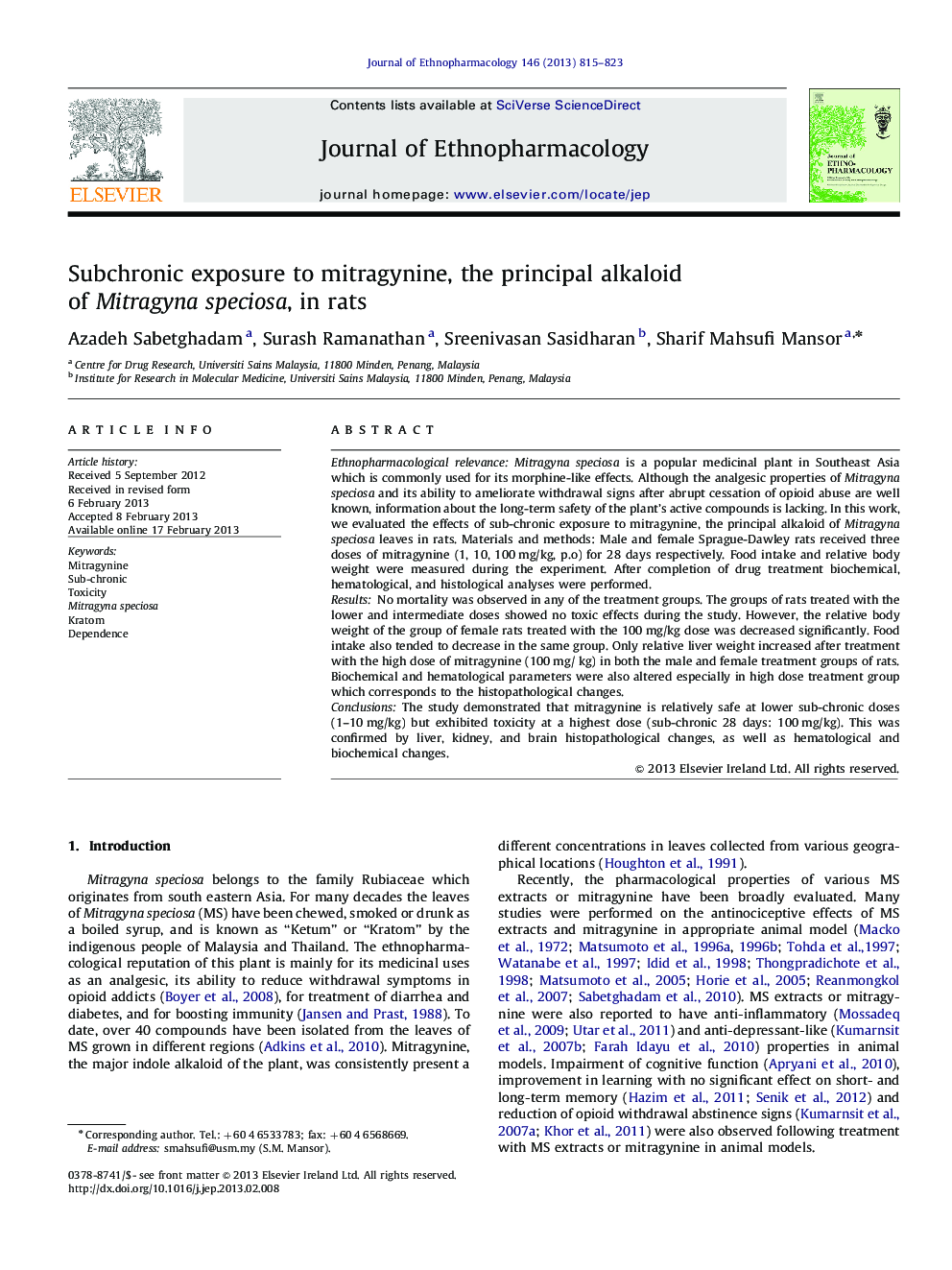| کد مقاله | کد نشریه | سال انتشار | مقاله انگلیسی | نسخه تمام متن |
|---|---|---|---|---|
| 2545492 | 1123959 | 2013 | 9 صفحه PDF | دانلود رایگان |

Ethnopharmacological relevanceMitragyna speciosa is a popular medicinal plant in Southeast Asia which is commonly used for its morphine-like effects. Although the analgesic properties of Mitragyna speciosa and its ability to ameliorate withdrawal signs after abrupt cessation of opioid abuse are well known, information about the long-term safety of the plant's active compounds is lacking. In this work, we evaluated the effects of sub-chronic exposure to mitragynine, the principal alkaloid of Mitragyna speciosa leaves in rats. Materials and methods: Male and female Sprague-Dawley rats received three doses of mitragynine (1, 10, 100 mg/kg, p.o) for 28 days respectively. Food intake and relative body weight were measured during the experiment. After completion of drug treatment biochemical, hematological, and histological analyses were performed.ResultsNo mortality was observed in any of the treatment groups. The groups of rats treated with the lower and intermediate doses showed no toxic effects during the study. However, the relative body weight of the group of female rats treated with the 100 mg/kg dose was decreased significantly. Food intake also tended to decrease in the same group. Only relative liver weight increased after treatment with the high dose of mitragynine (100 mg/ kg) in both the male and female treatment groups of rats. Biochemical and hematological parameters were also altered especially in high dose treatment group which corresponds to the histopathological changes.ConclusionsThe study demonstrated that mitragynine is relatively safe at lower sub-chronic doses (1–10 mg/kg) but exhibited toxicity at a highest dose (sub-chronic 28 days: 100 mg/kg). This was confirmed by liver, kidney, and brain histopathological changes, as well as hematological and biochemical changes.
Graphical AbstractFigure optionsDownload high-quality image (49 K)Download as PowerPoint slide
Journal: Journal of Ethnopharmacology - Volume 146, Issue 3, 19 April 2013, Pages 815–823